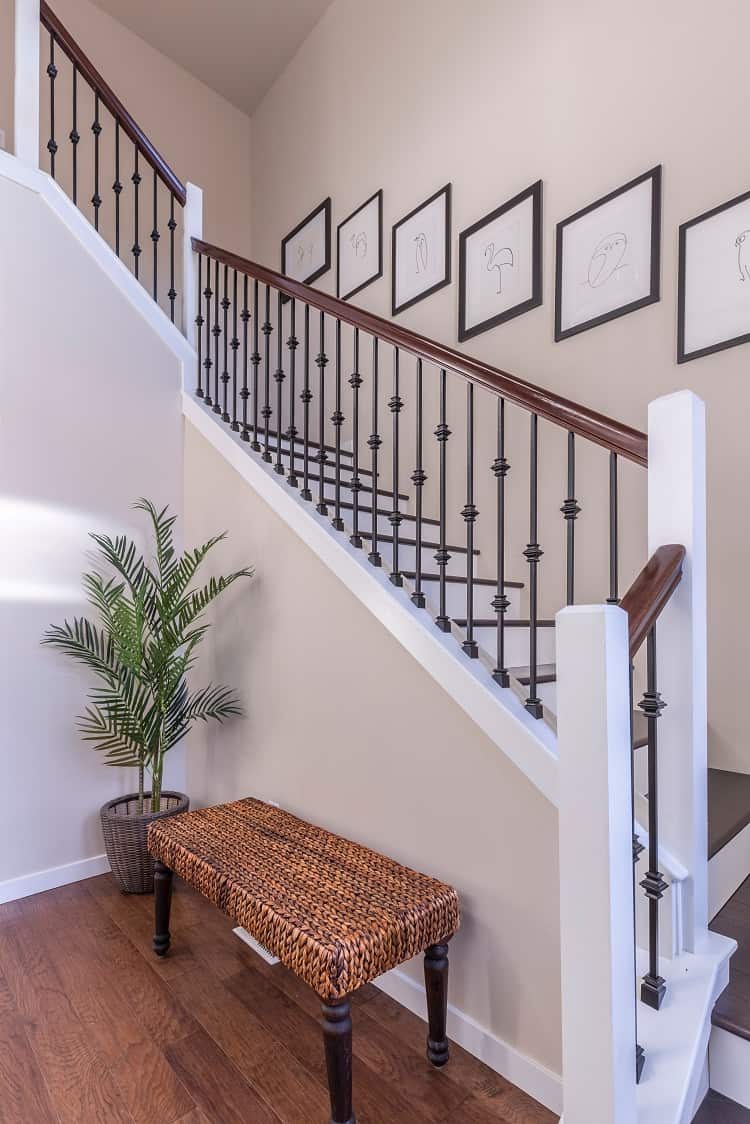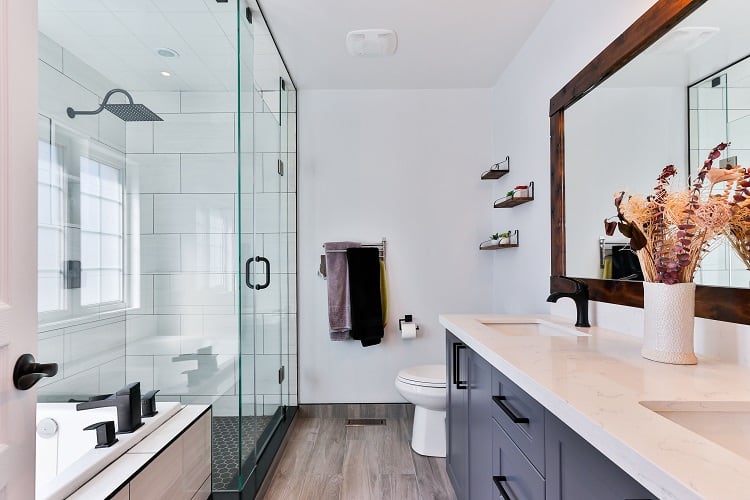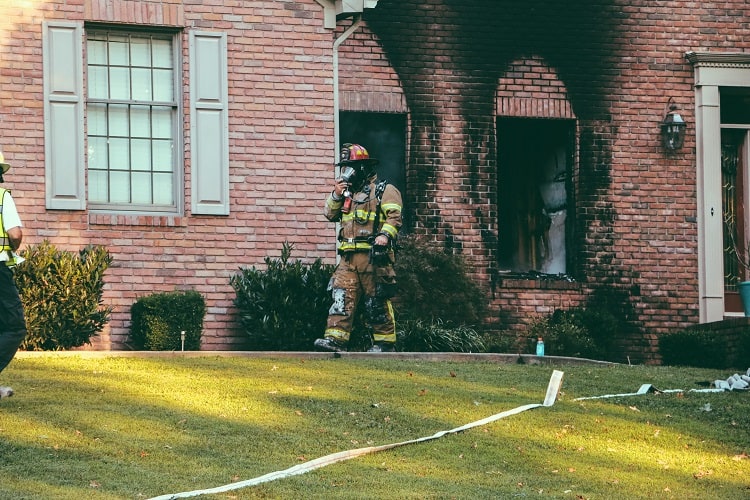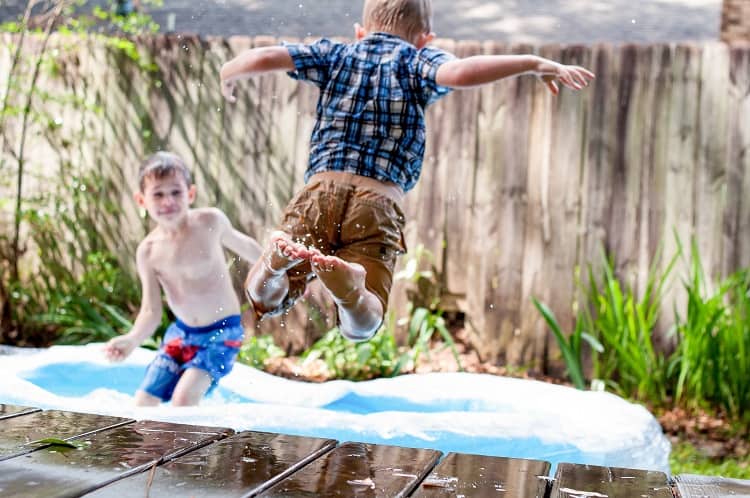Your home should be a place that shelters you from all the dangers of the outside world. A retreat meant for comfort, relaxation, and for spending quality time with the people (or pets) that you love most.
But even the coziest of homes can pose accident risks.
Luckily, as opposed to the world around us, a home’s potential safety hazards are well-known — which means you can address them in time and make sure you’re not taking any unnecessary risks that could end up hurting you or one of your loved ones.
That’s why we thought I’d be a great idea to go over some of the most common hazards around the house (and the many ways in which we can address them before any harm is done).
1. Slips and falls
Some of the most commonly reported home accidents consist of slips and falls.
That’s why you’ll want to pay special attention to this and to prioritize making your home a slip- and fall-free environment. This will guarantee a higher level of safety for everyone in your household, especially the elderly and younger children.
Unsurprisingly, most falls inside the household happen at the stairs. It could be because there are no rails, the planks are too slippery, the steps are too narrow, or people are using them during the dark.

But slips and falls can also happen in any part of your home, especially where wet surface is present (think bathroom or kitchen). With that, you should ensure that both your floors and any stairs you might have are safe for everyone to use, any time of the day.
How to address:
For slippery steps, you may want to ensure that each plank has a material that has a proper grip with every step. You can choose to install carpets or anti slip metal stair treads. This way, you can be at peace that no one will slip or fall while climbing up and down the stairs.
Apart from installing anti-slip materials, you should also consider installing solid, easy-to-grab-onto rails and stairway lighting to ensure proper visibility, even during the dark. This will help make falls less likely and you can rest easy knowing that there won’t be any big accidents in your home.
For your bathroom, it would be ideal if you could provide a full shower enclosure so you can limit the area of wet floors. Moreover, you should also add anti-slip mats inside to prevent slips. If slips still seem to happen quite frequently inside your bathroom and kitchen, you might want to consider installing an absorbent carpet. While they may be harder to maintain, they can keep everyone safe inside.

Now, if you have an elderly person living with you, you should consider taking things up a notch and installing support on the walls of your shower, tub, and toilet, so they can fully guide themselves as they try to get up and move their position.
2. Fires
A fire is by far the biggest danger to your home and all of its residents. Not only can it damage your entire property, but it can also put someone’s life at risk, your own included.
That’s why you can never be too careful — or take enough precautions — to prevent that from happening. Knowing what to do when a fire breaks out and having necessary materials on hand can make all the difference in containing a fire from spreading and becoming a life-threatening hazard.
How to address:
Installing a fire alarm in your home is required by law. While you may think that you only need to place one in the kitchen as it’s where you usually cook, you should actually install fire extinguishers all over your home.
This will ensure that you’ll immediately identify when there’s a fire in your home. Moreover, you should make sure to check the batteries every six months to guarantee they’ll work when they need to.
To prevent any electrical damage and fire, you should call for an electrician every year to conduct an assessment about the condition of your electrical wirings. If you notice something wrong with your cables, you should contact a professional immediately and unplug all devices.
Lastly, you should have a fire extinguisher nearby. While you may try to do everything to prevent fire, you can never know when it might occur. To prevent the fire from developing into something worse, having a fire extinguisher nearby would make you feel more at peace.

It’s important to note that there are different types of fire extinguishers, with each classification addressing a different type of fire hazard. So make sure you read about these before deciding which ones you might need to have in your home.
3. Carbon monoxide poisoning
Unlike regular gas, carbon monoxide is an element whose presence in the room you’ll never identify. This type of gas is odorless and colorless, but can poison anyone who breathes it in.
Carbon monoxide may come from the fumes of stoves, fireplaces, furnaces, small engines, and more. With that, you need to look for ways to prevent everyone from experiencing carbon monoxide poisoning.
How to address:
It may be challenging to block out the presence of carbon monoxide without proper maintenance. Ideally, you should call for a professional service that’ll inspect your home for any carbon monoxide hazard, including your home’s water heater, gas, oil, or any other appliance you use.
If that sounds like a lot of hassle, know that you only need to have a professional come at least once a year — and the benefits far outweigh the minor inconvenience.
Apart from maintaining the quality of your home, you should also install a carbon monoxide detector in your home so you can immediately identify if there’s a presence of it inside the room. With one, you can hurriedly get yourselves out of your household and call for help. This would be a great security feature your home must have.
4. Drowning
You’d be forgiven for thinking this is less of a household hazard if you don’t have a pool. But children are at a high risk of drowning even with just two inches of water present around them. In fact, most cases of drowning happen amongst children unattended by adults
How to address:
The most important thing that you can do to prevent drowning is always to ensure that you supervise your kids at all times. But since we all know how quick they can move if you take your eyes off of them for even a second, you can never take too many precautions on this end.

So let’s address the two biggest areas of concern around the house:
- The bathroom: It’s best never to let any amount of water or liquid lying around (think bathtub, bucket, or any other container with water). Also consider installing a toilet-lid locking device and make a habit out of keeping your bathroom doors closed at all times, limiting your risk exponentially.
- Pool area: If you have infants in the house and want full peace of mind, the absolute safest way to deal with a pool when having small children is to install fencing at least 5 feet (1.5 meters) high on all sides of the pool, as well as a self-closing and self-latching gate with a lock that’s out of a child’s reach. If that’s a little too drastic for your taste, one thing you should definitely have in your arsenal is a pool cover, to make sure your pool is not accessible when you’re not using it. Make sure to always remove any toys or floats from the water when you’re not using the pool, to prevent kids from trying to retrieve them when you’re not paying attention. Also, if you have an above-ground pool, simply remove the ladder after you’ve finished using it, to limit access for the little ones.
Final notes
Your home’s safety should always be your priority, especially if you have children or elderly parents living with you. That’s why you should always be aware of the top household hazards so you can look for ways to prevent any accidents before they even take place.
If you’re still in the process of designing and building your home, you should consult with a professional so they can advise you on the appropriate steps you can take to ensure safe and harmonious living. And while the above advice is meant to guide you and help you create a safe environment for you and everyone else living in your house, you should always consult with a specialist to ensure that you’re taking every precaution you can.
More articles you might enjoy
How to Keep Your House Plants Alive: 6 Top Tips
Outdoor Home Care: 5 Easy And Sustainable Tips to Keep Your Home Exteriors Clean
6 Smart Home Devices to Keep Your Pets Safe, Well Fed and Entertained While You’re Away
A Step-by-Step Guide to Buying a Property for Airbnb



